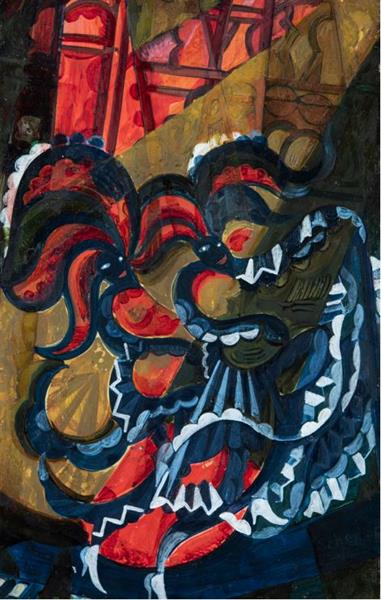Description
In the vibrant universe of modernist art, we find the evocative painting "Kánkán 1930" by Hugó Scheiber, a work that captures the effervescence of the spirit of the 30s. Scheiber, a Hungarian artist born in 1873 and died in 1950, was a prominent figure in the European avant -garde scene. His work stands out for his ability to merge the dynamism of modernity with a deep sensitivity towards the human condition.
"Kánkán 1930" is a symphony of shapes and colors that give life to the emblematic dance of the Can-Can, a cabaret dance characterized by its energetic movements and its audacity. Scheiber's composition reflects this energy through curved and winding lines that seem to vibrate on the canvas, capturing the frantic movement of the raised legs and wavy skirts of the dancers. The image is a burst of color and dynamism that transports us directly to the Bohemian and libertine atmosphere of the Parisian cabaret.
The use of color in "Kánkán 1930" is bold and expressive. Scheiber uses a palette of primary and secondary colors in intense and contrasting tones, with a predominance of red, yellow and blue. These shades not only represent the vivacity and energy of Can-Can, but also reveal the influence of German expressionism, movement with which Scheiber had some contact. The brightness and shadows are textured in an almost touch, giving painting a sensation of three -dimensionality.
As for the characters, Scheiber focuses their attention on the dancers, who are in movement positions that capture the essence of the dance. The figures are represented in a stylized way, with elongated faces and elongated bodies that emphasize the typical theatricality and exaggeration of the dance style. Extended legs and raised skirts create dynamic diagonal lines that dominate the composition, guiding the viewer's gaze painting with a feeling of rhythm and cadence.
Painting is not only a celebration of Can-Can, but also a meditation on the modernity and cultural change of the time. Scheiber manages to encapsulate in one painting The socio-cultural transition of the interwar period, where hedonism and the search for momentary joy were responses to recent tensions and traumas.
Hugó Scheiber, although perhaps not as known as some of his contemporaries, left an indelible brand in the history of art with his unique and visionary style. Works such as "Kánkán 1930" are vivid examples of how art can capture the essence of a historical and cultural moment, immortalizing on the canvas the vibrant energy of an era.
Thus, "Kánkán 1930" is not only a visual celebration of an iconic dance, but also a testimony of the power of art to reflect and comment on the spirit of his time. Kinetic energy and the sense of perpetual movement in Scheiber's painting continue to resonate with spectators, reminding us of the beauty and effervescence of life itself.
KUADROS ©, a famous paint on your wall.
Hand-made oil painting reproductions, with the quality of professional artists and the distinctive seal of KUADROS ©.
Art reproduction service with satisfaction guarantee. If you are not completely satisfied with the replica of your painting, we refund your money 100%.

